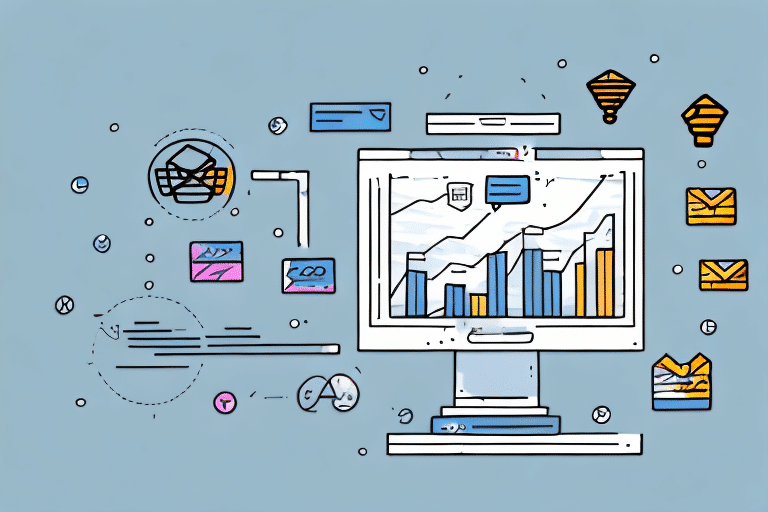Understanding Customer Lifetime Value (CLV): Measuring and Maximizing Customer Value in E-Commerce
Customer Lifetime Value (CLV) is a pivotal metric for any e-commerce business, quantifying the total value a customer brings over their entire relationship with your brand. It encompasses their purchase behavior, preferences, and interactions, enabling businesses to tailor marketing efforts, enhance customer retention, and ultimately drive revenue and profitability. This comprehensive guide explores the intricacies of CLV, including its definition, significance, calculation metrics, strategies for optimization, and real-world case studies demonstrating its impact on e-commerce operations.
Defining Customer Lifetime Value (CLV) and Its Importance
Customer Lifetime Value (CLV) quantifies the economic value of a customer relationship by considering the revenue they generate, the costs associated with acquiring and retaining them, and the potential for future transactions. Calculating CLV allows businesses to allocate resources effectively, prioritize customer segments, and make informed decisions about marketing and retention strategies.
Why is CLV crucial for e-commerce? By focusing on long-term customer relationships rather than short-term sales, businesses can identify their most valuable customers and tailor experiences and promotions to enhance loyalty and engagement. This strategic approach not only boosts profitability but also fosters a sustainable business model.
Key Metrics for Calculating CLV in E-Commerce
Accurately calculating CLV requires a comprehensive understanding of various metrics and variables. Key metrics include:
- Revenue per Customer: The total revenue generated by a customer within a specific time frame.
- Repeat Purchase Rate: The frequency at which a customer makes repeat purchases.
- Churn Rate: The percentage of customers who cease interactions or purchases over a given period.
- Customer Acquisition Cost (CAC): The total cost incurred to acquire a new customer, including marketing and sales expenses.
- Discount Rate: The rate used to discount future revenue, reflecting the time value of money.
Combining these metrics allows for the development of a robust CLV model, providing valuable insights into customer profitability and informing strategic business decisions.
Utilizing CLV to Optimize Marketing and Advertising Budgets
CLV serves as a vital tool for optimizing marketing and advertising expenditures. By understanding the expected value of each customer, businesses can determine the maximum amount they can invest in acquiring or retaining them while maintaining a positive return on investment (ROI).
For instance, if a customer has a CLV of $500 and the CAC is $50, the business can afford to spend up to $50 on marketing efforts to acquire that customer. Additionally, allocating more budget to retention strategies for high-CLV customers can yield greater long-term revenue.
Moreover, analyzing CLV by marketing channel or campaign effectiveness can help identify the most profitable avenues, allowing for more strategic budget allocation. According to a [Harvard Business Review study](https://hbr.org/2014/10/the-value-of-customer-experience-quantified), improving customer experience can significantly boost customer loyalty and CLV.
Strategies to Increase CLV Through Personalization and Customer Experience
Enhancing personalization and customer experience are key strategies for increasing CLV. Effective approaches include:
- Customer Segmentation: Grouping customers based on CLV, purchase behavior, and demographics to tailor marketing efforts.
- Personalized Recommendations: Utilizing data and algorithms to suggest products or services aligned with individual customer preferences.
- Customized Content: Creating dynamic website, email, and social media content that resonates with each customer's interests and needs.
- Exceptional Customer Service: Providing proactive and responsive support to resolve issues and exceed customer expectations.
Implementing these strategies fosters a more engaging and memorable customer experience, leading to increased satisfaction, loyalty, and ultimately, higher CLV. According to a [Salesforce report](https://www.salesforce.com/research/customer-expectations/), 70% of customers say connected processes are very important to winning their business.
Data Analysis and Predictive Modeling for CLV Optimization
Leveraging data analysis and predictive modeling is essential for accurately forecasting and optimizing CLV. Key techniques include:
- CLV Forecasting: Employing regression, cohort analysis, or machine learning models to predict future CLV based on historical data.
- A/B Testing: Experimenting with different marketing messages, offers, or website features to assess their impact on CLV.
- Customer Feedback Analysis: Collecting and analyzing feedback through surveys, reviews, and social media to identify areas for improvement.
- Inventory Management: Ensuring adequate stock of high-CLV products to maintain customer satisfaction and prevent stockouts.
Utilizing these data-driven approaches enables businesses to make informed decisions that enhance customer value and optimize e-commerce operations. For more insights on predictive analytics, refer to this [McKinsey article](https://www.mckinsey.com/business-functions/mckinsey-analytics/our-insights/predictive-analytics-creating-value-with-machine-learning).
Common Pitfalls in Implementing a CLV Strategy
Developing a successful CLV strategy requires avoiding several common mistakes:
- Focusing Solely on Short-Term Metrics: Prioritizing immediate sales over long-term customer relationships can undermine CLV growth.
- Ignoring Customer Preferences: Failing to personalize interactions and offers can lead to disengagement and reduced loyalty.
- Underestimating Acquisition Costs: Accurately accounting for all costs associated with acquiring and retaining customers is crucial for precise CLV calculations.
- Lack of Cross-Functional Coordination: Effective CLV strategies require alignment across sales, marketing, customer service, and operations teams.
By recognizing and addressing these pitfalls, businesses can develop more effective and sustainable CLV strategies.
Case Studies: Successful CLV Strategies in E-Commerce
Examining real-world examples can illustrate the tangible benefits of effective CLV strategies:
- Amazon: Utilizing sophisticated algorithms for personalized marketing and product recommendations, Amazon significantly enhances CLV by fostering repeat purchases and customer loyalty.
- Zappos: Renowned for exceptional customer service, Zappos encourages repeat business and referrals, thereby increasing CLV through strong customer relationships.
- Sephora: Implementing personalized tactics such as quizzes and tailored recommendations, Sephora creates a unique customer experience that drives engagement and CLV.
These case studies demonstrate that investing in CLV strategies can lead to substantial growth and profitability by prioritizing customer satisfaction and long-term relationships. For more detailed insights, refer to the [Forbes analysis on Amazon's customer strategy](https://www.forbes.com/sites/forbesbusinesscouncil/2021/06/17/the-secret-behind-amazons-successful-customer-strategy).
Future Trends in CLV Measurement and Enhancement
The landscape of CLV is continually evolving, influenced by technological advancements and changing consumer behaviors. Emerging trends include:
- Big Data and Artificial Intelligence: Enhanced data collection and AI-driven analytics enable real-time CLV optimization based on diverse data sources.
- Omni-Channel Integration: Seamlessly integrating online and offline channels provides a consistent and personalized customer experience, boosting CLV.
- Sustainability and Social Responsibility: Businesses prioritizing ethical practices and sustainability attract and retain customers who value these principles, thereby increasing CLV.
Staying abreast of these trends allows e-commerce businesses to refine their CLV strategies and maintain a competitive edge. For a deeper exploration of future CLV trends, visit the [Gartner report on customer experience](https://www.gartner.com/en/insights/customer-experience).
Conclusion
Customer Lifetime Value is a fundamental metric that underpins the success and profitability of e-commerce businesses. By accurately measuring and strategically optimizing CLV, businesses can cultivate stronger customer relationships, enhance retention and loyalty, and differentiate themselves in a competitive market. Whether through personalized marketing, exceptional customer experiences, or data-driven optimization, investing in CLV strategies fosters sustainable growth and long-term profitability.




















